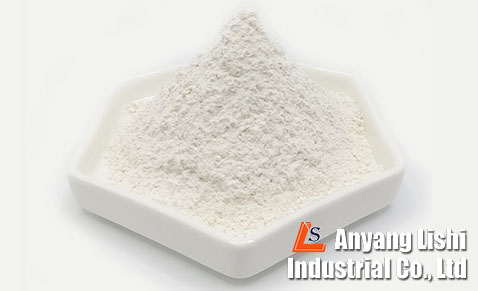
Refractory materials are the basis for all high-temperature industrial implementations and used in a wide variety of applications. This article summarizes the application of refractory materials in four major downstream industries: steel industry, cement industry, non-ferrous metal smelting industry and glass industry, including blast furnaces, converters, electric furnaces, pot furnaces, LF furnaces, RH vacuum refining equipment, Selection of different types of refractory materials for high-temperature equipment such as cement kilns, glass kilns, and non-ferrous metal smelting furnaces.

Refractory materials, according to international standards, refer to non-metallic (not excluding a certain proportion of metal) materials and products whose chemical and physical properties are stable and can be used normally in high-temperature environments. The American standard definition of refractory materials: non-metallic materials that can be made into structures and devices where temperatures exceed 1000°F based on their chemical and physical properties. According to Japanese standards, refractory materials are defined as shaped refractory materials that can be used at temperatures above 1500°C, and unshaped refractory materials, refractory slurries and refractory insulation bricks that have a maximum operating temperature of above 800°C. China follows international standards. Refractory materials are defined as non-metallic materials with physical and chemical properties suitable for use at high temperatures, but it does not rule out that some products may contain a certain amount of metallic materials.
There are many classification methods for refractory materials. According to their chemical properties, they can be divided into three categories: acidic refractory materials, alkaline refractory materials and neutral refractory materials.
According to the main mineral chemical components of refractory materials, they can be divided into: siliceous refractory materials, aluminosilicate refractory materials, magnesia refractory materials, magnesium spinel refractory materials, magnesium chromium refractory materials, and magnesium dolomite refractories. Refractory materials, dolomite refractory materials, carbon composite refractory materials, high alumina refractory materials, chromium refractory materials, zirconium refractory materials, etc.
According to the form of supply, it can be divided into two categories: shaped and unshaped refractory materials.
According to different classifications of refractory resistance, they are divided into ordinary/high-grade/special grade/super refractory materials; those with a temperature resistance of 1580~1770℃ are called ordinary refractory materials, high-grade refractory materials can withstand high temperatures of 1770~2000℃, and those with a high temperature resistance of 2000~3000℃ are called Special grade refractory materials, those with a temperature above 3000℃ are called super refractory materials.
According to the classification of volume density, it can also be divided into light/heavy refractory materials.
According to different classifications of properties and sizes, they are divided into standard type/common type/special type/special type refractory materials, etc.
Classification according to the chemical composition of refractory materials is the most common way of classifying refractory materials.
Sodium feldspar, a crucial mineral in the ceramic and glass industries, finds extensive use in the production of refractory materials due to its distinct properties and advantageous characteristics. Here’s a detailed breakdown of why sodium feldspar is indispensable in the refractory industry:

Sodium feldspar is primarily composed of aluminum silicates, potassium, sodium, and calcium. Its chemical composition plays a pivotal role in its suitability for refractory applications. The high alumina (Al2O3) content contributes significantly to its refractory nature, making it resistant to high temperatures.
The presence of alumina within sodium feldspar endows it with a notably high melting point. This property is crucial in refractory materials, where components must endure extreme temperatures without deforming or degrading. It retains its structural integrity even in the face of intense heat, making it ideal for use in furnaces, kilns, and other high-temperature industrial settings.
Sodium feldspar exhibits low thermal expansion properties. This characteristic ensures that refractory materials containing sodium feldspar maintain their shape and structure even when subjected to rapid temperature changes. This stability is crucial in preventing cracking or fracturing, thereby prolonging the lifespan of the refractory components.
Another significant advantage of sodium feldspar in the refractory industry is its low iron content. Iron impurities can compromise the performance of refractory materials, especially at high temperatures, as they can lead to accelerated deterioration or chemical reactions. The low iron content in sodium feldspar ensures enhanced durability and resistance to thermal stress.
Sodium feldspar possesses a high level of chemical inertness, which is a desirable trait in refractory materials. It resists chemical reactions with molten metals, slag, or other materials processed in high-temperature environments. This inertness prevents contamination of the materials being processed and contributes to the longevity of the refractory structure.

Its adaptability in formulation allows sodium feldspar to be combined with other refractory materials to create blends tailored for specific applications. By adjusting the composition and ratios, manufacturers can fine-tune properties such as thermal conductivity, strength, and corrosion resistance, meeting the diverse needs of various industrial processes.
In conclusion, the unique combination of high alumina content, high melting point, low thermal expansion, low iron content, chemical inertness, and versatility in formulation makes sodium feldspar an indispensable component in the production of refractory materials. Its ability to withstand extreme temperatures while maintaining structural integrity positions it as a cornerstone mineral in the refractory industry, facilitating the construction of durable and heat-resistant materials vital for numerous industrial applications.

Whether you have questions or you would just like to say hello,Contact us!
Call Anytime:
+86 15837207537Send E-mail:
info@lsakminerals.comAddress:
Anyang City , Henan Province, China.